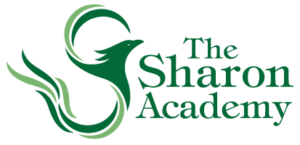Core Curriculum
In this Section
|
HUMANITIES: Literature and Social Studies
For the Humanities curriculum, TSA divides students into Division II (9th and 10th grades) and Division III (11th and 12th grades). In Division II, students are asked to have an inward focus and consider what they personally believe in, and an outward perspective as they explore the connections between world cultures. Classes are team taught, emphasizing the importance placed on connection and integration of skills. In Division III, students are asked to become more specialized and to evaluate and analyze literature and social studies as discrete disciplines. In order to achieve this, literature and social studies are taught as separate courses.
For more details about the high school literature and social studies curricula, visit Division II Humanities or Division III Humanities.

HS Science
SCIENCES
The goal of The Sharon Academy’s Science Department is to graduate students who have the confidence, curiosity, and tools necessary to answer questions relating to science in their everyday lives. All of the science classes strive to help all students achieve Scientific Literacy, including a basic understanding of what science is (vs. pseudoscience), scientific vocabulary, scientific methods, use of tools and models, math/science connections, skepticism, ethics and scientific history & current events. With a focus on hands-on, problem-solving based learning, the main concept driving all science courses at The Sharon Academy is relevance.
Visit Sciences for more details about the high school science curriculum.
MATHEMATICS
The Sharon Academy math curriculum is designed for students to cultivate competency in math, appreciation for math, and growth through struggling with appropriate challenges. The goal of every mathematics course at TSA is to expose students to systematic thinking, skill development and problem-solving. This involves a building block approach that includes mastering basic skills and logical mathematical processes.
Common themes developed through the math curriculum include practiced collaboration, appropriate use of technology, reviewing old skills, problem solving, and learning from mistakes. Classes strive to connect topics with applications and scenarios that model real world situations with mathematics. Classroom practices are based on a discussion model, with whole class and small group problem solving throughout. Teaching styles include both direct instruction and inquiry or discovery methods.
Visit Mathematics for more details about the high school mathematics curriculum.

HS Spanish
WORLD LANGUAGES
The Sharon Academy offerings in world languages help students read, write, speak, and listen for meaning in Spanish or French. We use state standards and ACTFL (American Council on the Teaching of Foreign Languages) guidelines to shape our curriculum and pedagogy, using a selection of texts and authentic materials. Focus is on a positive learning environment where students feel comfortable taking risks and making mistakes in the language. Whether we are tackling grammatical structures, vocabulary building, cultural awareness, pronunciation or conversational fluency, the emphasis is always on encouraging students to push themselves out of their linguistic comfort zones while providing a safe space in which to do so.
Additionally, we recognize that culture and language are intertwined. Students cannot truly master a language until they understand the cultural context in which the language occurs. This is why our classes put an emphasis on culture.
Visit World Languages for more details about high school Spanish and French curricula.
OTHER CREDIT OPPORTUNITIES
Revised June 2019
